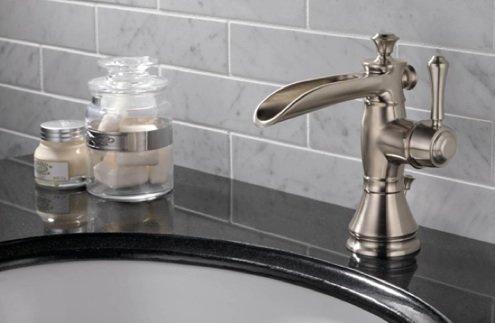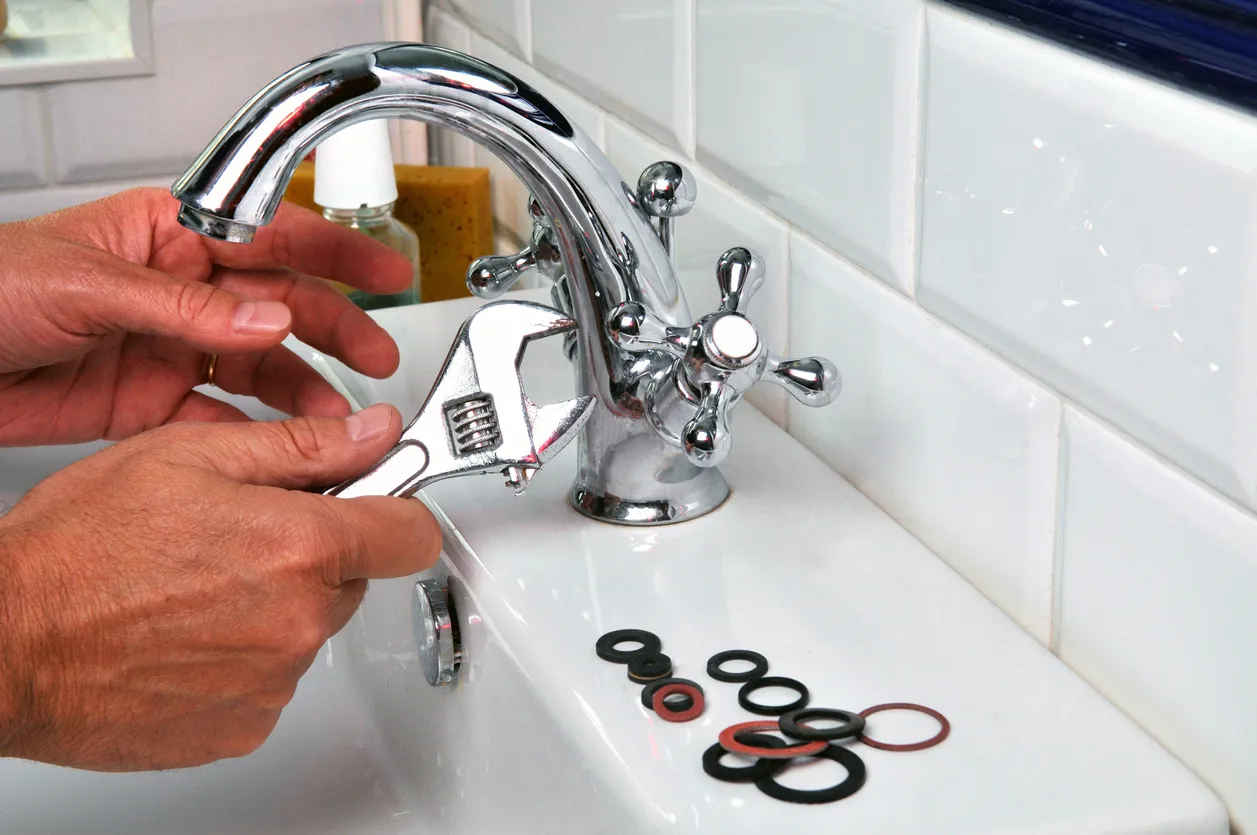Which It's Necessary to Resolve a Malfunctioning Faucet
Which It's Necessary to Resolve a Malfunctioning Faucet
Blog Article
Presented here underneath you can discover a bunch of high-quality news in regards to 4 Common Reasons for a Leaky Faucet.

Dripping taps could appear like a minor aggravation, however their influence surpasses simply the nuisance of the audio. From wasting water to incurring unneeded economic costs and wellness dangers, disregarding a dripping faucet can bring about various consequences. In this post, we'll explore why it's essential to address this common household problem without delay and efficiently.
Wastage of Water
Environmental Influence
Dripping faucets add substantially to water wastage. According to the Environmental Protection Agency (EPA), a solitary faucet trickling at one drip per secondly can lose greater than 3,000 gallons of water per year. This not only stress water sources but also impacts environments and wild animals dependent on them.
Step-by-Step Guide to Fixing a Dripping Faucet
Devices Called for
Before attempting to repair a trickling faucet, gather the necessary devices, including an adjustable wrench, screwdrivers, replacement components (such as washing machines or cartridges), and plumber's tape.
Usual Tap Issues and Their Solutions
Recognize the kind of tap and the certain problem creating the drip. Typical problems include worn-out washers, rusty shutoff seats, or faulty O-rings. Describe manufacturer instructions or online tutorials for detailed guidance on fixings.
Financial Expenses
Increased Water Expenses
Past the environmental influence, leaking taps can pump up water costs considerably. The gathered waste with time translates into greater energy costs, which might have been prevented with timely repair services.
Potential Building Damage
Furthermore, prolonged dripping can bring about damage to fixtures and surface areas bordering the faucet. Water accumulation can cause discoloration, corrosion, and even structural problems if left neglected, resulting in additional repair service expenses.
Health Concerns
Mold And Mildew and Mildew Growth
The constant presence of moisture from a trickling faucet creates an optimal atmosphere for mold and mildew and mold growth. These fungi not just compromise indoor air quality however likewise pose health risks, especially for individuals with respiratory system problems or allergies.
Waterborne Conditions
Stagnant water in trickling taps can end up being a breeding ground for germs and other microorganisms, raising the threat of waterborne conditions. Impurities such as Legionella germs prosper in stagnant water, possibly resulting in significant health problems when ingested or breathed in.
Do it yourself vs. Specialist Repair
Advantages and disadvantages of DIY Repair Service
While some may try to deal with a dripping faucet themselves, DIY repair services include their very own set of obstacles. Without correct knowledge and devices, DIY efforts can exacerbate the problem or bring about incomplete repair work, prolonging the issue.
Benefits of Working With a Specialist Plumber
Working with an expert plumber guarantees that the underlying source of the trickling tap is dealt with properly. Plumbers possess the knowledge and tools to identify and repair tap issues efficiently, saving time and decreasing the danger of more damages.
Environmental Obligation
Individual Contribution to Preservation
Taking responsibility for repairing trickling taps lines up with more comprehensive initiatives towards water preservation and environmental sustainability. Every person's activities jointly make a considerable effect on preserving precious sources.
Lasting Living Practices
By focusing on timely repairs and taking on water-saving routines, people contribute to sustainable living practices that profit both present and future generations.
Safety nets
Regular Upkeep Tips
To avoid trickling faucets, perform routine maintenance such as cleaning aerators, evaluating for leaks, and changing damaged parts promptly. Additionally, think about mounting water-saving gadgets or updating to extra effective fixtures.
Significance of Prompt Fixes
Attending to dripping taps as soon as they're discovered prevents more water wastage and potential damage, eventually conserving both water and money in the future.
Impact on Home Value
Perception of Well-Maintained Building
Maintaining a building in good condition, consisting of dealing with maintenance problems like trickling faucets, enhances its perceived value and charm amongst possible purchasers or tenants.
Influence on Resale Worth
Properties with well-kept plumbing components, including taps, command greater resale values in the property market. Dealing with trickling taps can add to a favorable impact during residential or commercial property assessments and arrangements.
Conclusion
Attending to a leaking faucet goes beyond plain comfort; it's a vital action towards preserving water, lowering financial prices, and securing wellness and home. Whether through DIY repairs or expert help, taking action to fix leaking faucets is a small yet impactful method to promote responsible stewardship of resources and contribute to a much healthier, more lasting future.
How to Fix a Leaky Faucet: Step-by-Step Repair Guide
A leaky faucet may seem like a simple annoyance, but if it's not fixed promptly, that leak could cost hundreds to potentially thousands. From water damage to mold, mildew, and high water bills, even a tiny leak can be catastrophic if left unattended. Damage like this can even affect the overall value of your home, so it's important to take the right approach for leaky faucet repair. You may need the help of a plumber in some cases, but we've got a few tips you can try on how to fix a leaky faucet before calling the pros.
Four Faucet Types
When you're learning how to fix a leaky faucet, the first step is knowing what kind of faucet you're working with! There are four common types.
Cartridge Faucets
Cartridge faucets come in one- or two-handled varieties. In one-handled cartridge faucets, hot and cold water combines in a single cartridge. In the two-handled versions, hot and cold water are controlled separately and mixed in the faucet.
Ball Faucets
Ball faucets have a single lever you push up and down to adjust the pressure and rotate to change the temperature. A slotted metal ball controls the amount of water allowed into the spout.
Compression Washer Faucets
They're the oldest type of faucet, but they're still used in many homes — especially older ones. Compression faucets have two separate handles that, when turned, raise or lower the washer that seals a water valve. This valve stops water from flowing through the faucet when it is turned off.
Disc Faucets
Disc faucets rarely need to be repaired due to their maintenance-free design. The water flow is controlled by two discs — the upper one raises and lowers against a fixed lower disc, creating a watertight seal. If your disc faucet starts leaking, you may need to replace the seals or clean residue buildup from the inlets.
Fixing a Leaky Faucet
Step 1: Turn Off the Water
Whether you're learning how to fix a leaky bathtub faucet or how to fix a leaky kitchen faucet, always turn off the water supply to your working area when you're fixing a leak. The last thing you want is a flood added to your list of things to fix.
Look for the shutoff valves below your sink or around the tub and turn them clockwise to stop the water flow. If your faucet doesn't have shutoff valves, you may need to turn off the water for the whole house. Check to make sure it's off by turning the faucet on. If nothing comes out, you're ready to start the repair.
Step 2: Take Apart the Faucet
How you disassemble your faucet depends on the type of fixture you have. You can use a flathead screwdriver to remove the caps on top of the handle or handles for cartridge and compression faucets. Inside, you should see handle screws. Unscrew these with a screwdriver to remove the handle.
Disc- and ball-style faucets will typically have an inlet screw near the handle, and removing that will reveal the interior of the faucet.
Detach the Valve Stem
For cartridge- and compression-style faucets, you'll see the inner valve stem or cartridge once you remove the faucet handles. If you have a compression faucet, unscrew the brass valve stem. If you have a cartridge faucet, pull out the cartridge. If your cartridge has been in place for a while, it may require some tools or extra force to remove it due to mineral deposits.
Examine and Replace Parts
Once you've removed the parts, check them out to confirm what needs to be replaced. You may see corroded rubber washers, O-rings, stems, or cartridges. On a ball-style faucet, check the seats and springs for damage.
If you need to repair a leaky disc faucet, check the inlet and seals on the lower disc.
Once you determine what parts must be replaced, visit your local hardware store. Bring the damaged parts with you to ensure you can purchase the correct components to replace them.
Clean Valves and Faucet Cavity
If you've removed a stem or cartridge, you may notice mineral buildup in the faucet's threads. Use white vinegar to clean the valve seat by soaking it for a few minutes, then scrub it away with a soft toothbrush and rinse with warm water. You can also clean the interior of the faucet in the same way.
Reassemble the Faucet
Once your faucet is cleaned and the required parts have been replaced, it's time to reassemble it. Put the pieces back together and slowly turn the water supply back on. Doing this slowly is crucial because too much initial water pressure can damage the new hardware you've just installed.
https://homewarranty.firstam.com/blog/how-to-fix-leaky-faucet

I came across that piece of writing about Why Is It Important To Fix Your Leaking Tap/Faucet? when doing a search on the web. Do you know anybody else who is interested in the subject? Please feel free to share it. I treasure your readership.
Report this page